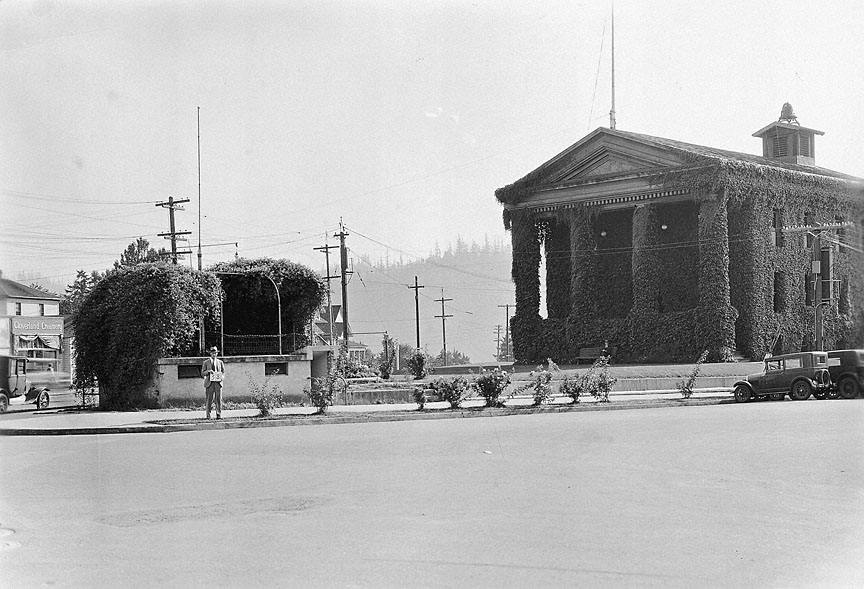- Catalog No. —
- COP 02609
- Date —
- n.d.
- Era —
- None
- Themes —
- Geography and Places, Government, Law, and Politics
- Credits —
- Oregon Historical Society
- Regions —
- Portland Metropolitan
- Author —
- City of Portland
St Johns City Hall
When it was built in 1905, St. Johns City Hall presided over an independent municipality. Like East Portland, Albina, and a number of other Portland neighborhoods, St. Johns originated as a separate settlement from Portland, complete with its own municipal buildings. The city of St. Johns was named for James John, who settled in the area in 1846 and opened a store soon after. St. Johns became a city officially in 1865.
In 1915, both St. Johns and its neighbor across the river, Linnton, approved annexation to Portland, which stretched Portland’s city limits by twenty-five percent. Residents of the two smaller towns expected to benefit from improvements in municipal services, and connections to Bull Run water while Portland looked forward to tax receipts from both current residents and those who moved into the residential and business areas. In fact, during the first year after incorporation, St. Johns residents continued to pay high prices for well water and were forced to pay city taxes as well. Not surprisingly, these requirements were sources for discontent for some community members.
After some problems with construction, various city offices moved into the St. Johns City Hall in 1907. In 1915 it became a fire station. Today, the North Precinct of the Portland Police Department is the only tenant. The building was renovated in both 1964 and 1996.
Further Reading:
MacColl, E. Kimbark. The Growth of a City: Power and Politics in Portland, Oregon 1915-1950. Portland, Oreg., 1979.
Written by Trudy Flores, Sarah Griffith, © Oregon Historical Society, 2002.
